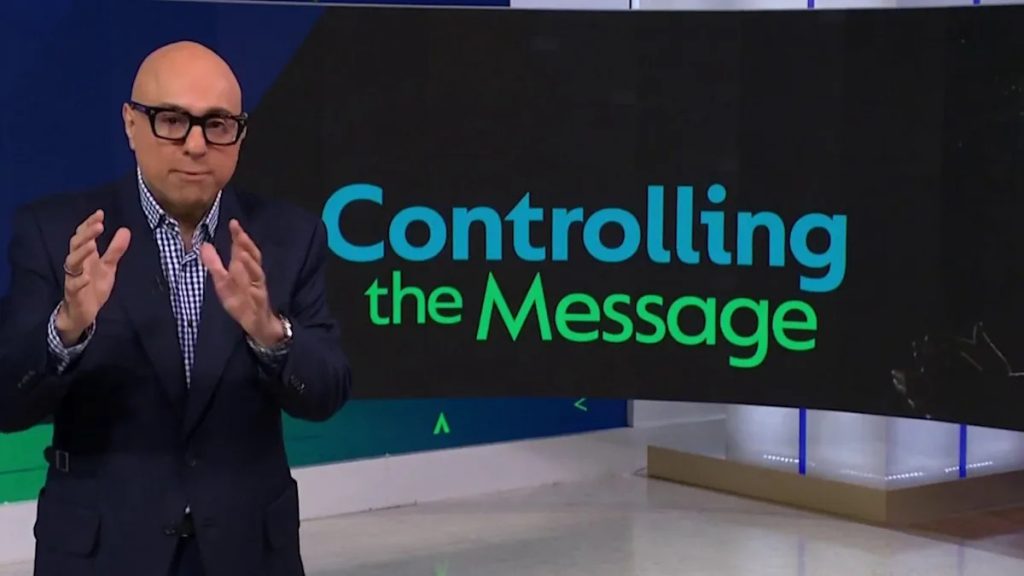Listen to the article
In a sharp departure from traditional presidential communication strategies, the Trump administration has increasingly employed tactics that critics say blend policy messaging with propaganda techniques. The White House has expanded its communication arsenal to include state-run media operations, orchestrated public displays, and the introduction of taxpayer-funded video content broadcast in airports across the country.
Political analysts note this multi-platform approach represents a coordinated effort to project an image of consolidated power and authority throughout the executive branch. The videos playing in high-traffic transportation hubs particularly stand out as they reach millions of domestic and international travelers daily in spaces where audience attention is essentially captive.
“What we’re seeing is an unprecedented use of government resources to amplify a singular presidential narrative,” says Dr. Eleanor Simmons, professor of political communication at Georgetown University. “These tactics raise legitimate questions about the appropriate use of public funds for what some would characterize as image-building rather than public information.”
The administration defends these communications as necessary to inform the public about government initiatives and policy achievements, arguing they serve an educational purpose rather than a political one. White House officials point to previous administrations that also produced videos and media content, though critics counter that the scale and messaging tone represent a significant departure.
However, historians and political scientists tracking these developments have identified what they describe as a paradoxical effect: as the administration’s messaging becomes more assertive and ubiquitous, it appears to generate stronger resistance among portions of the electorate.
“There’s a fascinating dynamic at play where attempts to project absolute authority are actually energizing opposition movements,” explains Dr. Marcus Chen, author of “Presidential Power and Public Perception.” “We’ve seen this pattern throughout history where overreach in executive communication can backfire by mobilizing counter-movements.”
This observation aligns with recent polling data showing increasing polarization in public response to administration messaging. While the president maintains strong support among his base, surveys indicate growing skepticism among independents and moderate voters regarding official White House communications.
Constitutional scholars emphasize that presidential power in the American system ultimately derives from public consent. Unlike authoritarian regimes where leadership can operate with minimal public approval, the U.S. government’s structure requires a certain level of public buy-in to function effectively.
“What makes our system different from true authoritarian states is that presidential authority has both legal and social limitations,” notes Vanessa Jefferson, constitutional law expert at Columbia University. “When a critical mass of citizens withdraws their consent, governance becomes increasingly difficult regardless of messaging strategy.”
Recent protests, legal challenges to executive actions, and congressional pushback illustrate this principle in action. Local governments, civil society organizations, and ordinary citizens have increasingly asserted their own authority through various democratic channels, creating what some observers call a “resistance ecosystem” operating parallel to federal government structures.
Media analysts point out that the administration’s communication approach has inadvertently created a more media-literate electorate, with Americans becoming more discerning about government messaging across the political spectrum.
“There’s been a crash course in media literacy happening in real time,” says media ethics researcher Dr. James Hernandez. “People are asking more sophisticated questions about who produces government communications, how they’re funded, and what unstated objectives might lie behind them.”
As the country approaches the next election cycle, the effectiveness of these communication strategies will likely be tested at the ballot box. Historically, administrations that overplay their hand in government messaging have faced electoral consequences, suggesting there may be natural limits to how far such approaches can extend in a democratic system.
The ongoing tension between aggressive messaging and public resistance represents a fundamental test of American democratic institutions and civil society—one that will likely influence how future administrations approach government communications for years to come.
Verify This Yourself
Use these professional tools to fact-check and investigate claims independently
Reverse Image Search
Check if this image has been used elsewhere or in different contexts
Ask Our AI About This Claim
Get instant answers with web-powered AI analysis
Related Fact-Checks
See what other fact-checkers have said about similar claims
Want More Verification Tools?
Access our full suite of professional disinformation monitoring and investigation tools




8 Comments
While presidents have long used communication strategies to shape their public image, the scale and scope of the Trump administration’s efforts do seem unprecedented. Raises important ethical concerns about government overreach.
The use of taxpayer-funded videos in airports seems like a questionable tactic to directly influence a captive audience. Wonder if this sets a precedent for future administrations to leverage public spaces for political messaging.
Good point. This could open the door to more overt political propaganda being broadcast in public spaces if not properly regulated.
The expansion of state-run media operations and orchestrated public displays by the Trump White House is certainly a departure from traditional presidential communication norms. Curious to see if this becomes more common going forward.
Interesting to see how the Trump administration used public platforms and media tactics to shape political narratives. Definitely raises questions around the appropriate use of government resources for messaging vs. informing citizens.
Fascinating to see how the Trump administration leveraged a multi-platform approach, including captive airport audiences, to project an image of consolidated power. Definitely blurs the line between informing the public and political propaganda.
Agree, this seems to cross an ethical line in terms of the appropriate use of government resources and platforms for political messaging.
This article highlights the blurring of lines between policy communication and propaganda techniques. Curious to hear more expert perspectives on where that line should be drawn for presidential administrations.